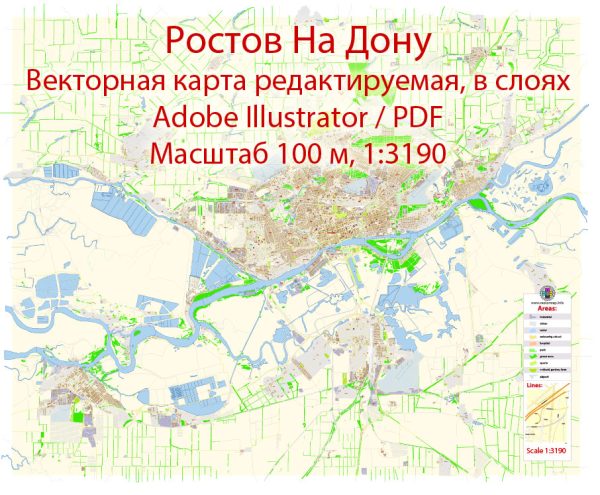Rostov-on-Don, often simply referred to as Rostov, is one of Russia’s largest and oldest cities. Its history of urban development is rich and diverse, reflecting the broader historical and cultural shifts of the region.
- Early History: Rostov-on-Don was founded in 1749 as a customs post on the Don River, serving as a crucial trading hub. The strategic location contributed to the city’s rapid growth and development. Initially, it was a small fortress called “Dmitriyevsky Ostrog” and later “Temernitsky Ostrog.”
- Imperial Era: During the Imperial era, Rostov-on-Don continued to flourish as a commercial and industrial center. It became a vital transportation hub with the construction of the railway in the 1860s, connecting the city to Moscow and other key regions. The population grew, and the cityscape expanded with the construction of new buildings and infrastructure.
- Soviet Period: The Soviet era brought significant changes to Rostov-on-Don. The city underwent industrialization, and new factories were established. The urban landscape evolved with the construction of Soviet-style buildings and monuments. The city played a role in various historical events, including the Russian Civil War and World War II.
- World War II: Rostov-on-Don was occupied by the German forces during World War II, leading to extensive damage and loss. The city played a crucial role in the Soviet offensive, known as the Rostov Strategic Offensive Operation, which aimed to liberate the region from German occupation. After the war, the city went through a period of reconstruction.
- Post-Soviet Era: With the collapse of the Soviet Union in 1991, Rostov-on-Don, like many other cities in the country, faced economic challenges and transitions. However, the city gradually adapted to the new political and economic landscape. There were efforts to modernize infrastructure, and Rostov became a center for various industries.
- Contemporary Development: In recent years, Rostov-on-Don has seen significant urban development. The city has invested in modernizing its infrastructure, including public transportation, roads, and public spaces. There has been an emphasis on cultural development, with the restoration of historical sites and the construction of new cultural institutions.
- Cultural and Architectural Heritage: Rostov-on-Don boasts a mix of architectural styles, ranging from historical buildings to Soviet-era structures and modern developments. Notable landmarks include the Cathedral of the Nativity of the Virgin Mary, the Rostov Regional Museum of Local Lore, and the Memorial Stele to the Liberators of Rostov.
- Economic Significance: Rostov-on-Don remains an important economic center, with a focus on industries such as agriculture, manufacturing, and trade. Its role as a transportation hub, situated on the Don River and connected by rail and road networks, contributes to its economic importance.
In summary, Rostov-on-Don’s history of urban development is a tapestry woven with threads of commerce, industry, war, and cultural evolution. The city has faced challenges and transformations throughout the centuries, shaping its identity as a dynamic and resilient urban center.


 Author: Kirill Shrayber, Ph.D.
Author: Kirill Shrayber, Ph.D.